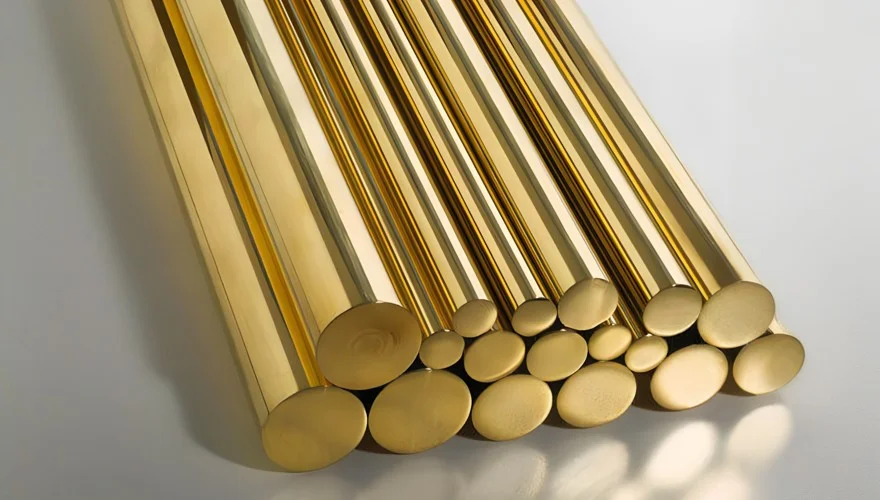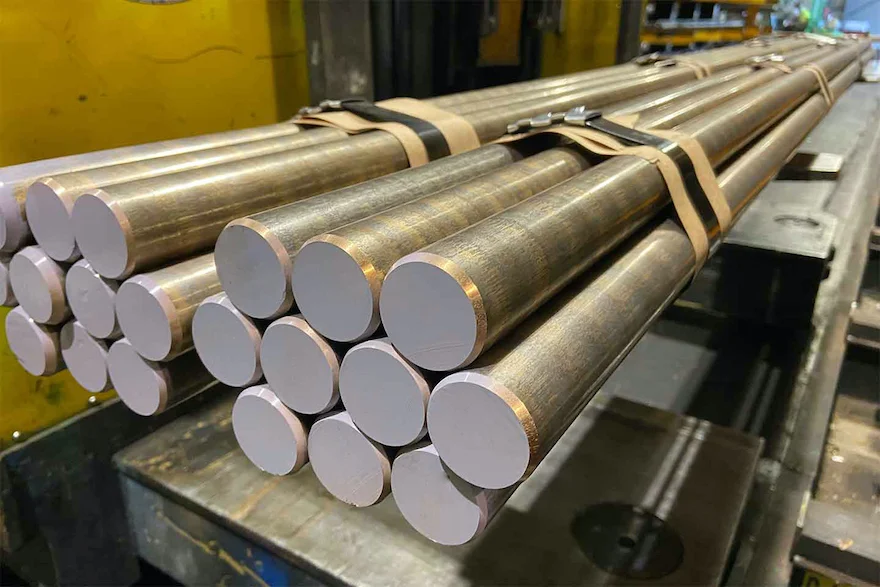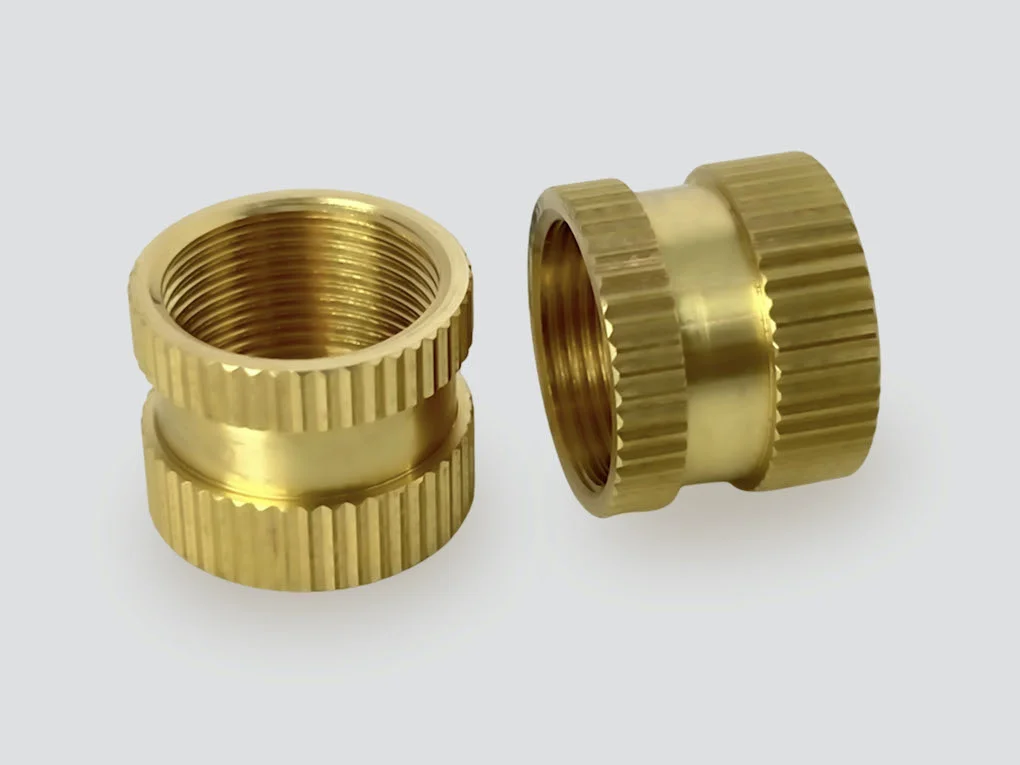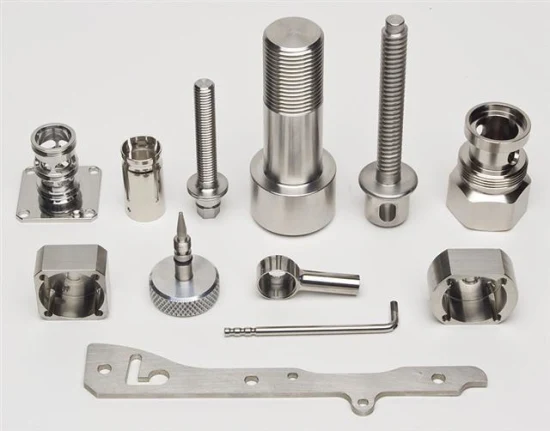
The Difference Between Copper, Brass, and Bronze
Copper: The Pure and Valuable Element
Copper, symbolized as Cu on the periodic table, is a naturally occurring metallic element with a characteristic reddish - orange hue. It is one of the few metals found in nature in a form that can be directly processed. Its high purity gives it significant value, and it can be recycled without loss of quality.

Properties of Copper
Exceptional electrical and thermal conductivity
High ductility
Good corrosion resistance
Antimicrobial properties
Grades of Copper
Copper is graded based on purity and added elements:
Electrolytic Tough Pitch (ETP) Copper (C11000): With at least 99.90% copper, it is the most common grade, known for its high conductivity and excellent formability.
Oxygen - Free High Conductivity (OFHC) Copper (C10100): Low oxygen content boosts electrical conductivity and reduces oxidation risk.
Deoxidized High Phosphorus (DHP) Copper (C12200): Similar to C11000 but with phosphorus added to improve weldability and prevent hydrogen embrittlement.
Tellurium Copper (C14500): Contains a small amount of tellurium, enhancing machinability without sacrificing conductivity.
Applications
Electrical wiring and electronics
Plumbing and pipework
Heat exchangers and HVAC systems
Medical equipment like surgical instruments, dental tools, and implants
Brass: The Copper - Zinc Alloy
Brass is an alloy mainly composed of copper and zinc, with trace amounts of other metals. The proportion of zinc and additional elements influences its color (ranging from reddish - copper to light yellow - gold) and mechanical properties. Higher zinc content increases strength but may reduce ductility. Brass is generally less expensive than pure copper due to the inclusion of the more affordable zinc.

Properties of Brass
Good mechanical properties
Excellent formability (with a lower melting point than copper, around 900°C)
Moderate electrical and thermal conductivity
Reasonable corrosion resistance
Grades of Brass
Brass grades are classified based on copper - zinc ratios and alloying elements:
Cartridge Brass (C26000): Composed of 70% copper and 30% zinc, it is ideal for cold working and used in ammunition casings and electrical components.
Yellow Brass (C27200): Higher zinc content gives it a bright yellow color and good formability, suitable for industrial and architectural uses.
Low - Leaded Brass (C33000): Highly machinable with low lead content, compliant with environmental standards, and used in drinking water fittings.
Clock Brass (C35300): Excellent for precision machining, especially in clock and watch manufacturing.
Free - Cutting Brass (C36000): Known for its malleability and machinability, used in soldering, brazing, and making fittings.
Architectural Bronze (C38500): Chosen for its machinability and appearance, suitable for architectural hardware.
Naval Brass (C46400): With added tin, it offers superior seawater corrosion resistance for marine applications.
Applications
Decorative items like jewelry and door trims
Musical instruments
Plumbing fittings
Electronics and electrical terminals
Bronze: The Ancient and Resilient Alloy
Bronze is a golden - brown alloy primarily made of copper and tin, with small amounts of aluminum, manganese, silicon, or phosphorus. It has a long history, dating back to 3500 BC.

Properties of Bronze
High strength and hardness
Superior corrosion resistance
Good thermal and electrical conductivity
Low metal - to - metal friction
Some brittleness
Grades of Bronze
High - Lead Tin Bronze (C93200): Commonly used for bearings and mechanical components that require wear resistance.
Aluminum Bronze (C95400): The hardest and strongest type of bronze, highly resistant to saltwater corrosion, used in pumps, valves, and aircraft landing gear.
Phosphor Bronze (C51000): Known for its fatigue resistance, used in springs, fasteners, and electrical connectors.
Silicon Bronze (C65500): High strength, excellent marine corrosion resistance, used in marine hardware and architectural applications.
Applications
Bearings and bushings
Marine hardware, propellers, and ship components
Statues and sculptures
Electrical connectors and springs
Key Differences
Element Composition
Copper is a pure element.
Brass is a copper - zinc alloy, with copper (60% - 90%) and zinc (10% - 40%), sometimes alloyed with other metals.
Bronze is mainly copper (80% - 90%) and tin (10% - 20%), with possible additional elements.

Appearance
Brass has a gold - like appearance.
Copper is reddish - orange, while bronze has a duller, reddish - brown color with possible surface rings.
Corrosion Resistance
Bronze is the most corrosion - resistant, especially in saltwater.
Copper forms a protective patina over time.
Brass has moderate corrosion resistance but is more vulnerable in certain conditions.
Conductivity
Electrically, copper has 100% conductivity, brass 28%, and bronze 15%.
Thermally, bronze has the highest conductivity, followed by copper and then brass.
Density & Weight
Copper has the highest density (8.96g/cm³).
Brass density varies with zinc content.
Bronze density depends on tin and other additives.
Hardness and Strength
In terms of hardness and strength: Bronze > Brass > Copper.
Machinability
Brass is the most machinable, followed by bronze, with copper being the most challenging due to its softness.
Weldability
All are weldable, but copper requires high energy, brass has issues with zinc vaporization, and bronze may become brittle in the heat - affected zone.
Selecting the Right Metal
General Usage
Choose bronze for marine applications due to its seawater resistance.
Opt for brass in daily life items because of its appearance.
Use copper for electrical and heat - related applications and food - related products due to its conductivity and antimicrobial properties.

Degree of Versatility
Copper offers excellent ductility for forming.
Brass is suitable for intricate machining in decorative and functional parts.
Bronze is ideal for wear - resistant and corrosion - resistant components but less adaptable for deformation.
Cost
Copper is the most expensive due to its purity.
Brass and bronze are less costly as they contain alloying elements that reduce the proportion of copper.
Order for Your Prototyping and Metal Machining Projects
Copper and its alloy bronze, brass ,are extensively used across various industries. If you're seeking a reliable partner to process your metal prototypes and parts, look no further than HL Parts! We offer a comprehensive range of custom metal machining services, such as CNC machining, sheet metal fabrication, and die casting, tailored to produce high-quality metal parts.
With over 10 years of experience in manufacturing metal parts for various industries, we offer competitive prices and short lead times. Contact us for more information on selecting the right material and manufacturing process for your parts.















